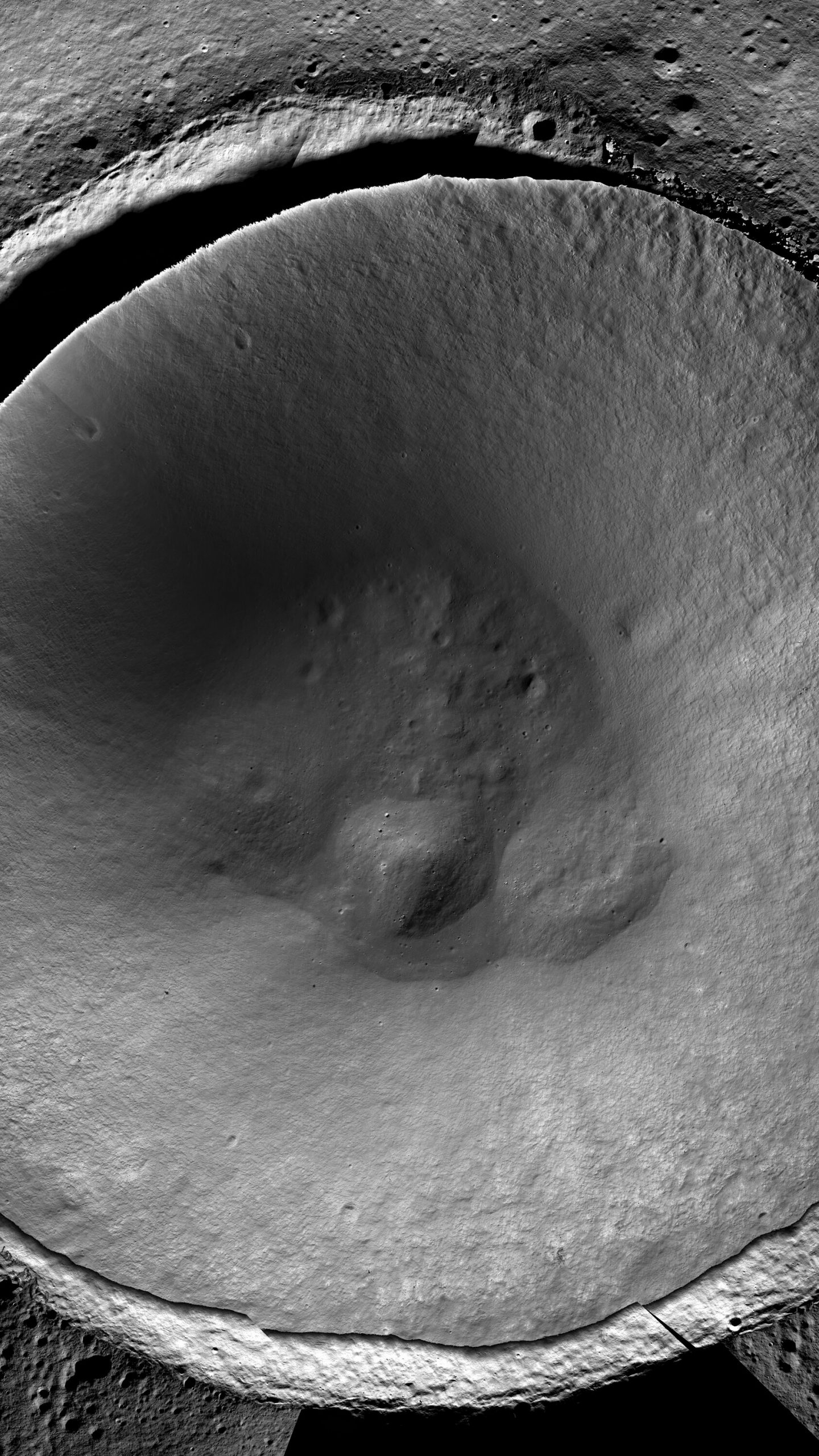


When a NASA spacecraft passes over Shackleton Crater on the moon and peers in, it sees this: a sea of blackness and nothing more.
This 13-mile-wide crater lies close to the moon’s south pole.
Here, the sun never rises high above the horizon, and the rim of Shackleton blocks the sun’s rays from ever shining directly onto the crater floor.
There are more than 300 such permanently shadowed craters on the moon, and the darkness hides an intriguing mystery: oases of frozen water, which could provide a key resource for astronauts living there in the future.
Scientists have now figured out how to, in essence, flip on the light switch.
Here is what the inside of Shackleton Crater looks like.

The Moon’s Most Shadowy Places Can’t Hide From NASA’s New Camera
How is it possible to take a picture of a place where the sun never shines?
Hint: A giant electronic flash is not practical.
These new views are the fruits of ShadowCam, an instrument that NASA provided for Danuri, a South Korean orbiter that arrived at the moon in December.
Since 2009, almost all of the moon’s surface has been photographed in detail by Lunar Reconnaissance Orbiter, a NASA spacecraft. But its camera is not sensitive enough to see anything in the permanently shadowed craters.
Those shadows, however, are not pitch-black.
Sometimes sunlight bounces off the ground into the crater, and then ricochets upward to Danuri as it passes overhead.
Other images are illuminated by earthlight — sunlight that has bounced off the Earth toward the moon. That is enough to brighten the shadowed craters a little.
While the optics of ShadowCam are almost identical to those in the Lunar Reconnaissance Orbiter’s camera, the new instrument takes superlong exposures, increasing sensitivity by a factor of about 200.
The invisible darkness becomes visible.
The arrow in the image below points to the path of a boulder rolling down a slope within Shackleton Crater.
Prasun Mahanti, the deputy principal investigator for ShadowCam, said that when the scientists saw the first images, their reaction was relief that the instrument worked as designed.
“Then excitement kicked in immediately,” he said.
In certain places at certain times, the shadows are not even that dark. At a conference in March, scientists working on ShadowCam reported that the indirect light was comparable to “comfortable indoor lighting levels.”
Astronauts visiting those regions may not need to carry flashlights to see where they are going, although glare and long shadows could still pose problems.
ShadowCam can also shed light on the mystery of water on the moon. A NASA mission in 2009 identified water in a cloud of debris excavated from Cabeus Crater, one of the permanently shadowed regions.
But where is the water?
Even though ShadowCam images show white spots, so far none seem to be ice. Most of the bright spots appear to be boulders, exposed bedrock or fresh craters. That could mean that the water is covered by dust or trapped in minerals in the rocks.
Dr. Mahanti said more findings on this question are in the scientific pipeline.
ShadowCam is an example of greater international collaboration by NASA these days. South Korea gets to add to its space expertise while NASA saves the expense of building and operating its own spacecraft.
Images by NASA/KARI/Arizona State University.
Produced by Antonio de Luca.
 Print
Print


